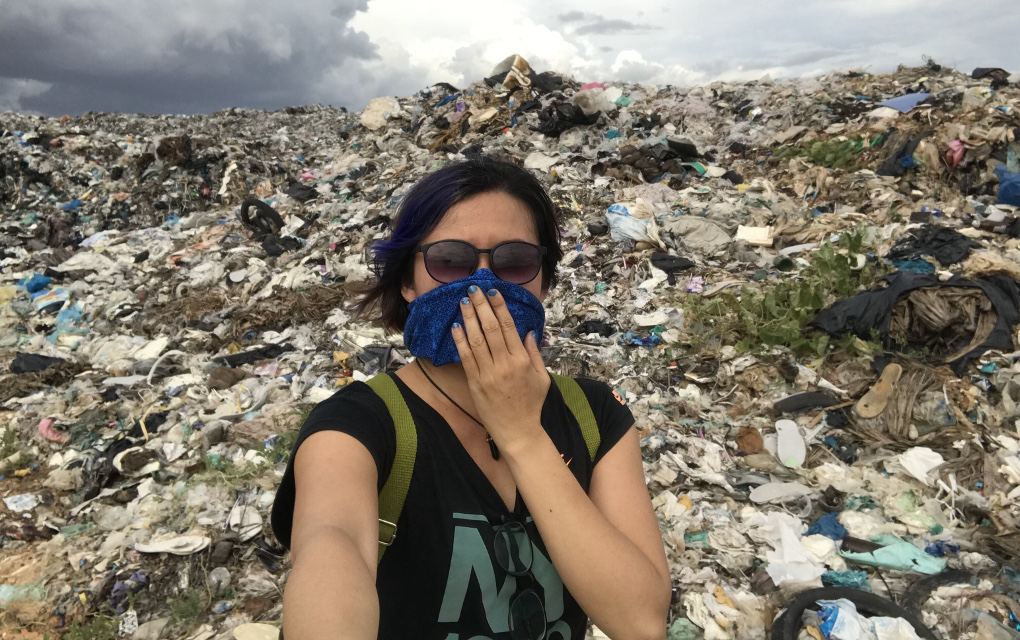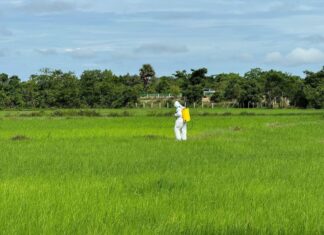In order to clean up Cambodia, individuals should understand how small changes in their behavior can make a difference, says a popular plastic-waste campaigner.
Sotheavy At, founder of Think of Plastic, a Facebook page with videos that reach about 1 million people every week, said she started her social media campaign to encourage her audience to reduce plastic use.
She saw lots of plastic waste everywhere in Cambodia and was concerned about its impact, so she wanted to do something that could lead to change, she said.
Her view was that instead of complaining, people should work together one by one to reduce plastic.
Sotheavy started to make and edit videos by herself earlier this year. However, she knew her campaign alone would not be enough, so she has promoted other people who have similar views to share their knowledge about the impact of plastic waste, she said.
Most of her videos encourage people to use eco-friendly products and give people some tips on how to reduce plastic in their lives. Her most popular video so far has been about lemongrass straws, and was posted in September last month. She currently makes about eight to nine videos a month.
“Every day I’m trying to reduce plastic by not buying plastic materials and so on. It’s not bad to do it alone, but I believe there were various activists doing the same thing. Therefore, I want to run this campaign in order to promote those activities and discuss the impact of plastic,” Sotheavy said.
People feel comfortable using plastic because it makes their lives easier, she said. So she doesn’t think it would be helpful for them to be pressured to stop using plastic immediately.
She wants to see people gradually reduce their plastic use out of their own will, she said.
“I believe in the power of individuals. If everyone has an understanding, they will make small changes,” Sotheavy said.
Sotheavy expects that in 10 years, Cambodians’ behavior will have changed about plastic waste. People will understand how to deal with plastic properly, and Cambodia will be cleaner. In 20 years, she hoped, Cambodia will have reduced plastic use on a large scale.
She said her campaign probably wouldn’t still be going in 20 years, but she hopes her videos today will lead people to start thinking about plastic more and more.
“I don’t expect my action will change people’s behavior by tomorrow, but I expect in the long term people will change,” Sotheavy said.
Her target audience is everyone in Cambodia, even children, she said.
So far, the feedback on her videos has been supportive, she said. People have told her they have started to use fewer plastic bottles whenever they drink coffee or water by bringing their own bottles, especially bottles that are not made of plastic.
“Since I started making these videos, there is only 0.01 percent bad feedback. Besides that, most of the comments I’ve received are positive and about their commitment to engage in order to reduce plastic,” Sotheavy said.
The majority of her audience is in Cambodia, though the campaign has also reached Cambodians living abroad around Asia and in the United States and Australia, she said.
She added that her audience was about 57 percent women and 43 percent men.
The Konrad-Adenauer-Stiftung foundation said last month that Cambodia produced 10,000 tons of waste every day, and Phnom Penh about 2,000-3,000 tons, including about 600 tons of plastic.
In 2017, the Environment Ministry issued a sub-decree saying all Cambodians have a duty to reduce plastic use as much as they can by reusing bags or using biodegradable ones. It also required supermarkets to start charging for plastic grocery bags.












